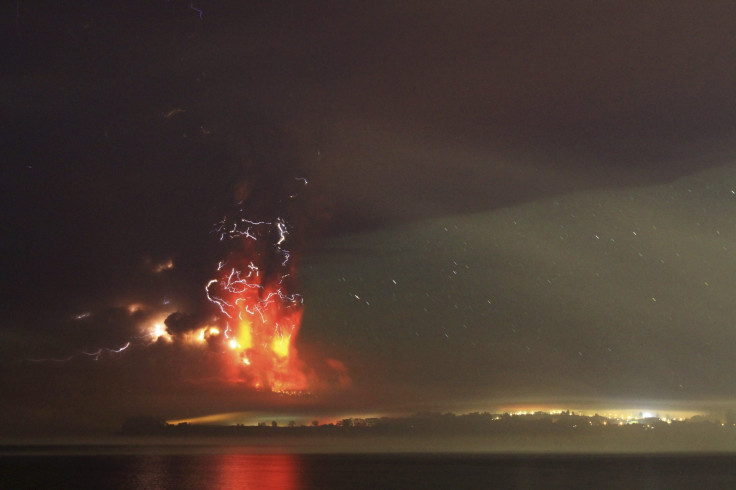Chile Calbuco Eruption 2015: How A Quiet Volcano Could Suddenly Explode After 5 Decades Of Dormancy [VIDEO]

The eruption of Chile’s Calbuco volcano Wednesday was as surprising as it was spectacular. Images and video of the event online showed glowing ash spewing from the top of the 6,572-foot mountain like steam from a locomotive. To Chileans living near Calbuco, it was as if hell’s gates had suddenly opened.
No one expected the volcano that had been mostly quiet for five decades to suddenly pop its top. Seismic monitoring systems only picked up on the pending eruption minutes before it happened. Such a sudden and violent outburst has proved that despite scientists’ best efforts to know when and where such eruptions will happen next, nature can still act in unpredictable ways.
The planet’s crust floats atop a layer of hot, molten rock called magma. Magma is less dense than rock, so it rises through cracks and vents in the upper layers of Earth’s crust like air bubbles in a champagne flute. As the magma approaches the surface, gases are released and start to build up pressure, like shaking a soda can. Sometimes, that pressure needs to escape.
About 50 to 60 volcanic eruptions occur every month around the world. The strength of an eruption depends on several factors, including the buoyancy of the magma, how much gas pressure has built up and the size of the chamber where the magma is stored, according to Universe Today.
Scientists usually can predict eruptions because volcanoes that are about to explode typically give warning signs. Researchers monitor for earthquakes and the release of gases near a volcano that could indicate an eruption. However, no two volcanoes are exactly alike – a few rumblings might indicate an eruption of one volcano but not another.
Last September, Japan's Mount Ontake volcano exploded with violent and deadly force. No one saw the eruption coming despite the country’s state-of-the-art network of volcano monitors. Scientists said the event was likely a phreatic eruption, which occurs when steam just under the Earth’s surface bursts. Such eruptions are almost impossible to predict.
"If you have a monitoring system in place, it's very unlikely that deeper activity will go unnoticed," Philipp Ruprecht, a volcanologist at Lamont-Doherty Earth Observatory in New York, told LiveScience last year. "We have very little information or science to help the monitoring people with phreatic eruptions."
Chile’s Calbuco volcano is located about 870 miles south of Santiago, the country’s capital. On Wednesday, Calbuco erupted twice in just a few hours. The first eruption sent a giant cloud of ash about 6 miles into the sky and measured a 4 or 5 on the volcanic explosivity index; the maximum is 8. The second eruption was just as powerful as the first, according to geologists. It was the volcano’s first major eruption since 1962. A minor explosion occurred there in 1972.
Officials quickly ordered evacuations within a 13-mile radius of Calbuco, according to Agence France-Presse. Calbuco continued to spew ash Thursday, forcing airports in the area to cancel flights. No injuries or deaths have been reported. However, one climber who was near the summit of the volcano has been reported missing. Scientists fear the volcano could start to ooze lava.
Witnesses to the spectacular event described their fear. "At the beginning it was small, and later the cloud grew, and later there was a huge cloud over you and true terror starts," one resident of the city of Puerto Montt told CNN.
"I had never seen this before. It scares you in the beginning,” one woman told the BBC. “You start to wonder what is going to happen to you.”
© Copyright IBTimes 2024. All rights reserved.






















